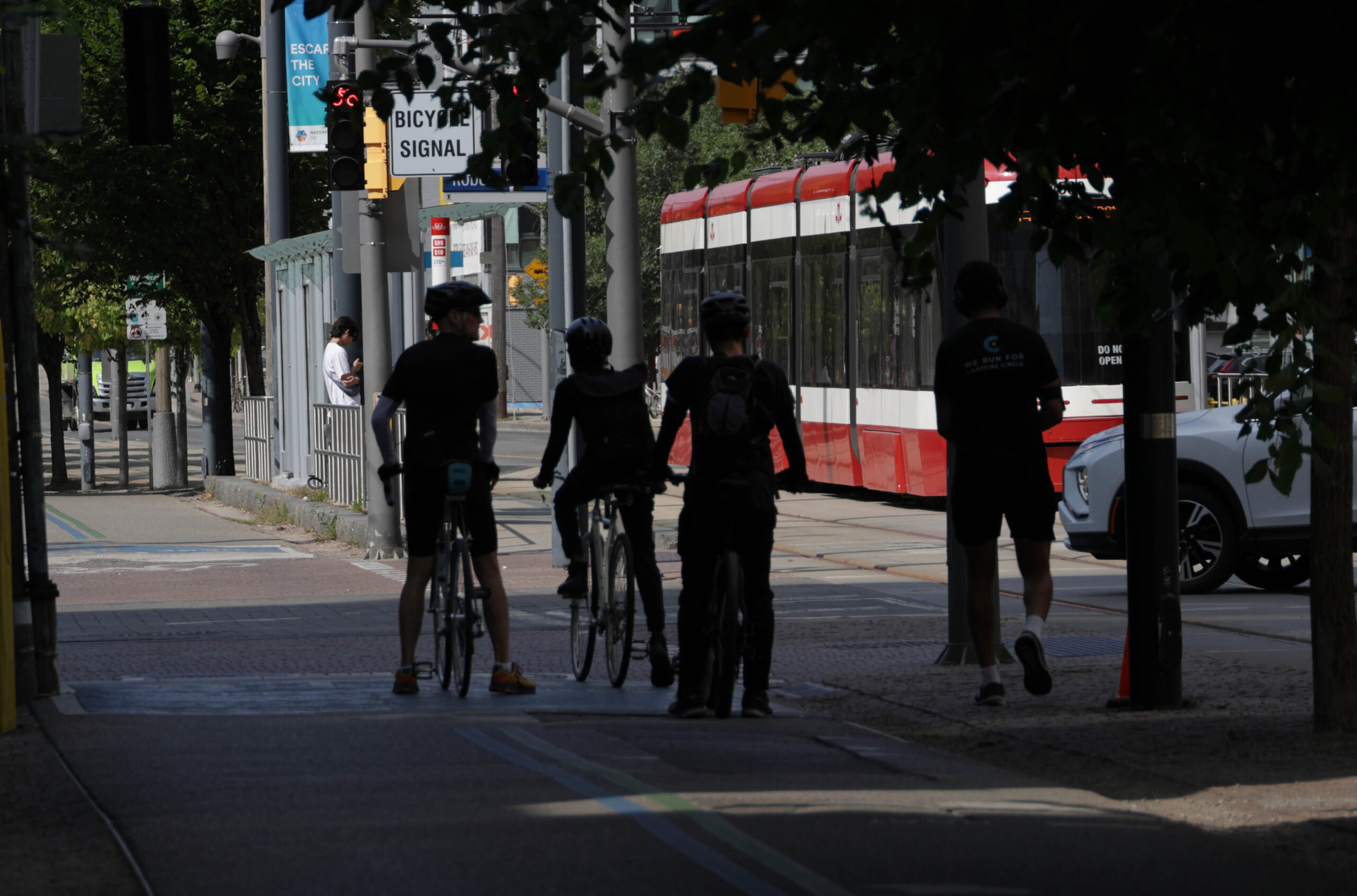U of T student’s case saves city bike lanes
The Ontario Superior Court rules in favour of a bid to stop the provincial government from tearing out cycle tracks.

University of Toronto student Eva Stanger-Ross says she was “really ecstatic” and “in a kind of disbelief” after an Ontario court upheld her bid to stop the provincial government from ripping out protected bike lanes in Toronto.
Ontario Superior Court Justice Paul Schabas ruled on Wednesday that the law mandating the removal of the lanes was arbitrary, would not accomplish its objective of decreasing traffic congestion, and would put cyclists at increased risk of injury and death.
The bike lanes in question — on Bloor Street, Yonge Street and University Avenue — traverse the University of Toronto (U of T) campus and run close to the campuses of Toronto Metropolitan University (TMU) and OCAD University.
“Bike lanes are super important for student life — I mean especially with the three bike lanes that Bill 212 was planning to remove. I lot of students rely on those bike lanes for transportation,” said Ms. Stanger-Ross, who launched the legal challenge in January along with Narada Kiondo and the advocacy group Cycle Toronto.
“Bike lanes not only allow students affordable and active forms of transportation, but they also support the community and local businesses that surround the university,” she added.
The Ontario government said it would appeal the ruling.
In support of their case, the applicants enlisted the expert testimony of U of T associate professor Shoshanna Saxe, a Canada Research Chair in Sustainable Infrastructure, and Linda Rothman, an associate professor in the School of Occupational and Public Health at TMU.
As well, one hundred and twenty physicians and researchers from the University of Toronto signed an open letter to Premier Doug Ford protesting the planned removal of the bike lanes. “Research from many jurisdictions, including Toronto, shows that protected bicycle lanes reduce the risk of motor vehicle trauma for pedestrians and cyclists. … and it is much preferable to prevent motor vehicle trauma than to try to treat it,” the letter stated.
“Reducing Gridlock” law sparked the fight
The court case stemmed from a provincial law entitled the Reducing Gridlock, Saving You Time Act (also known as Bill 212), which passed in November 2024. Under the law, municipalities must seek approval from the provincial Minister of Transportation before removing a lane of motor vehicle traffic to construct a bike lane. A separate section of the law specifically required the removal of the three protected bike lanes on Bloor Street, Yonge Street and University Avenue. The lawsuit addressed only these three lanes, not the remainder of the law.
“I was biking to school pretty regularly when Bill 212 was passed — and the bike lanes they were targeting were the lanes that I used every single day to get to school,” Ms. Stanger-Ross said. Before the bill passed, she and fellow U of T student Zev Godfrey created Fight for Bikes, a not-for-profit organization that arranged large protests in Toronto. However, Ms. Stanger-Ross said, “when the bill was passed, I didn’t want to just stop fighting and give up, so I joined with Cycle Toronto to form the case.”
Stanger-Ross and the other applicants argued that removing the bike lanes was arbitrary and defied cyclists’ fundamental rights to life and security of the person, as guaranteed in the Canadian Charter of Rights and Freedoms.
Evidence showed the law was arbitrary: judge
In his ruling, Justice Schabas reviewed copious evidence that was presented at trial, showing that the removal of bike lanes would not reduce traffic gridlock and would endanger cyclists. The evidence came from such varied sources as the City of Toronto’s 2024 traffic report, the Ontario Traffic Council, the Ontario Professional Planners Institute, the Ontario Society of Professional Engineers, the Toronto Parking Authority, the Toronto city manager, the Canadian Automobile Association, the Ontario Ministry of Transportation, and CIMA, the engineering firm hired by the province to remove the bike lanes.
TMU’s Dr. Rothman, an injury prevention epidemiologist with expertise in road safety, testified that removing the bike lanes “would likely lead to increases in collisions and fatalities.”
U of T’s Dr. Saxe testified that “investing in cycling infrastructure is one of the most powerful tools available to reduce congestion,” because “when there are safe cycle routes … people take up biking in large numbers,” thus reducing the number of cars on the road.
“The government’s evidence does not contradict or credibly challenge the Applicants’ evidence,” Justice Schabas concluded. He found that the government acted arbitrarily when it passed the law, writing, “there is no evidence that the government based its decision on data, manuals, or expert ‘highway engineering,’ or that its decision would ‘contribute to highway safety.’ Rather, the evidence is to the contrary.”
Although the decision strikes down the section of the law that mandates the removal of the three bike lanes in Toronto, it leaves the rest of the law intact, meaning that Ontario municipalities will still have to seek provincial government approval to build bike lanes that remove lanes of traffic.
Featured Jobs
- Psychology - Assistant Professor (Quantitative Methods / Data Science)MacEwan University
- Biochemistry, Microbiology and Bioinformatics - Faculty Position (Microbial Systems Biology, Omics Data Analysis)Université Laval
- Neuroscience - Assistant ProfessorMacEwan University
- Education - Indigenous Lecturer or Assistant Professor, 2-year term (Teacher Education)Western University
- Business - Assistant Professor (Digital Technology)Queen's University












Post a comment
University Affairs moderates all comments according to the following guidelines. If approved, comments generally appear within one business day. We may republish particularly insightful remarks in our print edition or elsewhere.
1 Comments
Thank you for this article. It is so important to get the facts out there.
The government here in Alberta is trying to implement similar laws to prevent municipalities from improving bike infrastructure. We need the public to know the facts about bike lanes – that they actually reduce traffic congestion.
Politicizing bike lanes only emboldens people to harass cyclists, such as a case last week in Edmonton where a driver intentionally hit a cyclist and laughed about it, later posting the video to social media. Police are investigating the case.
This is an extreme case of what happens when we politicize bike lanes.